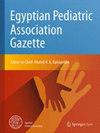镰状细胞病儿童造血干细胞移植资格:单中心报告
IF 0.5
Q4 PEDIATRICS
引用次数: 0
摘要
造血干细胞移植(HSCT)是目前唯一可治愈SCD的方法。然而,SCD患者接受造血干细胞移植的资格一直受到相关毒性和缺乏合适供体的限制。在开罗大学儿科血液学门诊,我们旨在确定镰状细胞病(SCD)队列中的造血干细胞移植(HSCT)候选者,估计可能的供体数量,并分析有和没有HSCT适应症的患者之间的差异。这项研究是一项横断面分析研究,共包括 128 名 SCD 儿童。他们的人口统计学、临床和实验室资料、总人数以及患有 SCD 的兄弟姐妹人数均来自他们的医疗记录。69名患儿(53.9%)至少有一项造血干细胞移植指征。尽管有羟基脲,但反复发作的剧烈疼痛是最常见的适应症。造血干细胞移植患者的血红蛋白较低,而网织红细胞计数、血清铁蛋白和天冬氨酸氨基转移酶较高(P值<0.001)。此外,造血干细胞移植候选者的脾肿大发生率、羟基脲剂量和输血次数明显更高(P 值分别为 0.013、0.005 和 <0.0001)。在有造血干细胞移植意向的患者中,75.3%至少有一个健康的兄弟姐妹可能是潜在的捐献者。半数以上的患者符合造血干细胞移植的条件,因此应考虑进行造血干细胞移植,以提供治愈疾病的可能。在符合移植条件的病例中,约三分之二至少有一个健康的兄弟姐妹可能成为捐献者。符合造血干细胞移植条件的患者应定期对其未受影响的兄弟姐妹进行人类白细胞抗原(HLA)检测。本文章由计算机程序翻译,如有差异,请以英文原文为准。
Eligibility for hematopoietic stem cell transplantation in a cohort of children with sickle cell disease: a single-center report
Hematopoietic stem cell transplantation (HSCT), is the only currently available curative option for SCD. Yet, the eligibility of SCD patients for HSCT is always limited by the significant associated toxicity and lack of suitable donors. At Cairo University’s pediatric hematology outpatient clinic, we aimed to determine hematopoietic stem cell transplantation (HSCT) candidates among a sickle cell disease (SCD) cohort, estimate the number of possible donors, and analyze the differences between patients with and without an HSCT indication. This study was a cross-sectional analytic study including 128 SCD children. Their demographic, clinical, and laboratory profiles, total number, and number of siblings with SCD were obtained from their medical records. Sixty-nine (53.9%) had at least one HSCT indication. Recurrent severe pain episodes despite hydroxyurea were the most common indication. Hemoglobin was lower, while reticulocyte count, serum ferritin, and aspartate aminotransferase were higher in HSCT candidates (p value < 0.001). Additionally, the prevalence of splenomegaly, the dose of hydroxyurea, and the number of transfusions were noticeably higher in HSCT candidates (p value = 0.013, 0.005, and < 0.0001 respectively). Among those indicated for HSCT; 75.3% had at least one healthy sibling who might be a potential donor. More than half were eligible for HSCT which should always be considered to provide a possible cure for the disease. Of the transplantation-eligible cases, about two-thirds had at least one healthy sibling who might potentially serve as a donor. Those meeting the requirements for HSCT eligibility should routinely undergo human leukocyte antigen (HLA) testing of their unaffected siblings.
求助全文
通过发布文献求助,成功后即可免费获取论文全文。
去求助
来源期刊

Egyptian Pediatric Association Gazette
PEDIATRICS-
自引率
0.00%
发文量
32
审稿时长
9 weeks
期刊介绍:
The Gazette is the official journal of the Egyptian Pediatric Association. The main purpose of the Gazette is to provide a place for the publication of high-quality papers documenting recent advances and new developments in both pediatrics and pediatric surgery in clinical and experimental settings. An equally important purpose of the Gazette is to publish local and regional issues related to children and child care. The Gazette welcomes original papers, review articles, case reports and short communications as well as short technical reports. Papers submitted to the Gazette are peer-reviewed by a large review board. The Gazette also offers CME quizzes, credits for which can be claimed from either the EPA website or the EPA headquarters. Fields of interest: all aspects of pediatrics, pediatric surgery, child health and child care. The Gazette complies with the Uniform Requirements for Manuscripts submitted to biomedical journals as recommended by the International Committee of Medical Journal Editors (ICMJE).
 求助内容:
求助内容: 应助结果提醒方式:
应助结果提醒方式:


